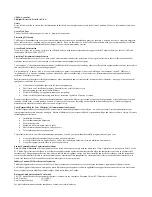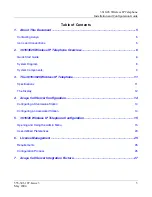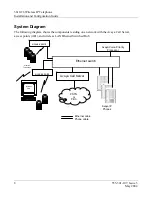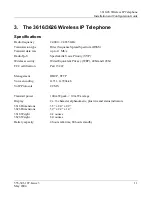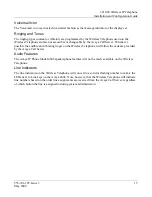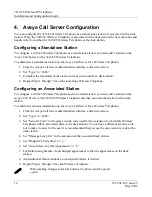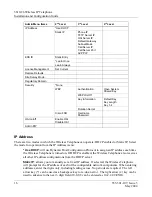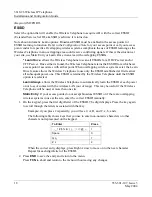
3616/26 Wireless IP Telephone
Installation and Configuration Guide
6
555-301-107, Issue 3
May
2004
2. 3616/3626 Wireless IP Telephone Overview
The 3616/3626 Wireless Telephone is a mobile handset for workplace IP telephone systems. The
Wireless Telephone operates over an 802.11b wireless Ethernet LAN providing users a wireless voice
over IP (VoIP) extension. By seamlessly integrating with an Avaya Call Server, Wireless Telephone
users are provided with high-quality mobile voice communications throughout the workplace. The
Wireless Telephone gives users the freedom to roam throughout the workplace while providing all the
features and functionality of an IP desk phone.
The 3616/26 Wireless IP Telephone provides a wireless extension to the Avaya Call Server. The
Wireless Telephones reside on the wireless LAN with other wireless devices using Direct Sequence
Spread Spectrum (DSSS) radio technology. The handset radio transmits and receives packets at up to
11Mb/s.
A Wireless Telephone must be administered on the Avaya Call Server for the specific features and
lines to be accessed by the Wireless Telephone. After the handset is registered, it receives its
configuration information from the Avaya Call Server.
The 3616/26 Wireless IP Telephone supports Wired Equivalent Privacy (WEP) as defined by the
802.11 specification. Avaya offers the product with both 40-bit and 128-bit encryption. WEP
increases the security of the wireless LAN to a level similar to a wired Ethernet LAN.
IP multicast addresses are used by the NetLink i640 Wireless Telephone
Push to Talk (PTT) feature. This requires that multicasting be enabled on
the subnet used for the NetLink Wireless Telephones, SVP Server, and
Telephony Gateways.
Routers are typically configured with filters to prevent multicast traffic
from flowing outside of specific domains. The wireless LAN can be
placed on a separate VLAN or subnet to reduce the effects of broadcast
and multicast traffic from devices in other network segments.
Quick Start Guide
1.
A wireless LAN must be properly configured and operational through the use of 802.11b wireless
access points (APs).
2.
A TFTP Server must be available on the network in order to load the appropriate software into the
Wireless Telephones. See Section 6 “License Management” for detailed instructions for loading
software on Wireless Telephones.
3.
The Avaya Call Server must be connected to your network and completely operational.
4.
The Avaya Voice Priority Processor, which controls the QoS on the wireless LAN for the Wireless
Telephones, must be on the same subnet as the Wireless Telephones and have the proper versions
of software. Visit
http://www.spectralink.com/service/software.php
to download the latest Avaya Voice
Priority Processor software.
5.
Add a station on the Avaya Call Server for each Wireless Telephone. You will administer each
Wireless Telephone as an Avaya 4606 IP Telephone.


